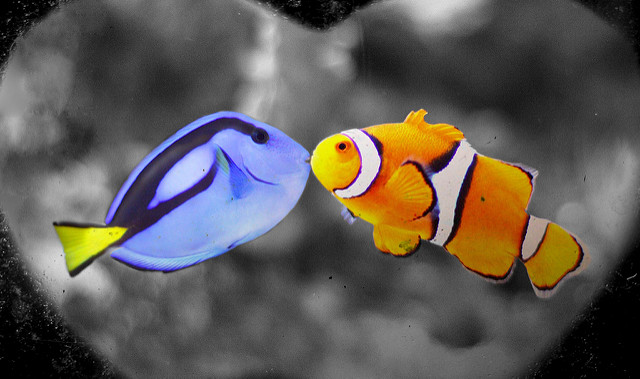http://e-info.org.tw/node/115594
《海底總動員 2》將上映 學者憂引發飼養潮
文字大小
279 2 Share1
本報2016年5月26日綜合外電報導,姜唯編譯;蔡麗伶審校
皮克斯動畫迷等了十年,盼到《海底總動員2:尋找多莉》(Finding Dory)將在今年上映,保育人士卻警告,大堡礁和其他珊瑚礁魚群的生存壓力,可能隨之增加。
《海底總動員》上映,讓很多「尼莫」進了水族館,導致野外小丑魚族群大量減少。圖片來源:Nathan Rupert(CC BY-NC-ND 2.0)。
以迪士尼2003年電影《海底總動員》(Finding Nemo)為名,澳洲昆士蘭大學和弗林德斯大學於十年前成立「拯救尼莫保育基金會」(Saving Nemo Conservation Fund)。
這部知名動畫片描述一隻小丑魚尋找失蹤兒子的故事,但《海底總動員》的上映,讓水族館的小丑魚數量大增,同時野外的小丑魚族群大量減少。現在,研究人員希望確保同樣的現象不要再次發生。
「人們不知道,水族館裡90%的海水魚來自野外。珊瑚礁魚群因為氣候變遷、海水暖化和酸化,生存狀況已經相當艱難,把牠們撈上岸絕對是雪上加霜。」專案專員席爾瓦(Carmen da Silva)說道。
自2005年起,拯救尼莫保育基金會開始人工繁殖小丑魚,確保野外族群得以存續。但是協調人現在擔憂,隨著動畫的上映,藍倒吊——電影裡的「多莉」——會變成下一個受害者。
研究人員希望透過社群媒體活動,引起幫多莉配音的知名主持人艾倫狄珍妮(Ellen DeGeneres)的注意。並且,藍倒吊沒有辦法人工養殖,因此這個計畫必須成功。
「人們喜歡這個可愛的角色,想要當寵物養,卻沒有接收到電影裡的保育訊息——讓尼莫回到海洋。」拯救尼莫保育基金會共同創辦人娜多什克(Anita Nedosyko)說。
【延伸閱讀】
【相關文章】
【參考資料】
https://www.theguardian.com/film/2016/may/19/finding-nemo-dory-pixar-could-damage-tropical-fish-populations?CMP=Share_AndroidApp_Facebook
Finding Nemo sequel Finding Dory 'could damage exotic fish populations'
Australian conservationists warn that Pixar sequel could increase pressure on marine populations, after the first film led to surge in popularity of pet clownfish
Australian conservationists have warned that the release of new Pixar filmFinding Dory could increase pressure on wild populations of exotic fish on the Great Barrier Reef and elsewhere.
Researchers from the University of Queensland and Flinders University teamed up a decade ago for the Saving Nemo Conservation Fund, named after the Disney-owned studio’s 2003 animated smash Finding Nemo, in which a clownfish searches the oceans for his missing son.
The earlier film led to the huge popularity of clownfish in pet shops, and a corresponding drop in their numbers in their traditional habitat on coral reefs. Now, researchers want to ensure the same phenomenon does not reoccur when Finding Dory is released this June.
“What most people don’t realise is that about 90% of marine fish found in aquarium shops come from the wild,” said project coordinator Carmen da Silva. “Reef fish populations are already struggling due to warmer sea temperatures and ocean acidification caused by global warming. The last thing they need is to be plucked off reefs.”
The Saving Nemo fund has been breeding clownfish in nurseries since 2005 in an effort to ensure wild populations do not suffer. But coordinators are now concerned that blue tang fish, like the character Dory, could become too popular once the new film is released.
They are hoping to catch the attention of Ellen DeGeneres, who voices the forgetful fish, via a social media campaign using the hashtag #fishkiss4nemo. The blue tang cannot be bred in nurseries, so the success of the campaign could be vital.
“People fell in love with the adorable characters and wanted to keep them as pets, instead of understanding the film’s conservation message of keeping Nemo in the ocean where he belongs,” said Saving Nemo co-founder Anita Nedosyko.



沒有留言:
張貼留言